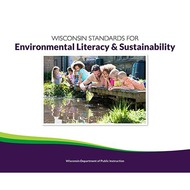Carbon Sequestration in Campus Trees
(View Complete Item Description)In this activity, students use a spreadsheet to calculate the net carbon sequestration in a set of trees; they will utilize an allometric approach based upon parameters measured on the individual trees. They determine the species of trees in the set, measure trunk diameter at a particular height, and use the spreadsheet to calculate carbon content of the tree using forestry research data.
Material Type: Activity/Lab




















